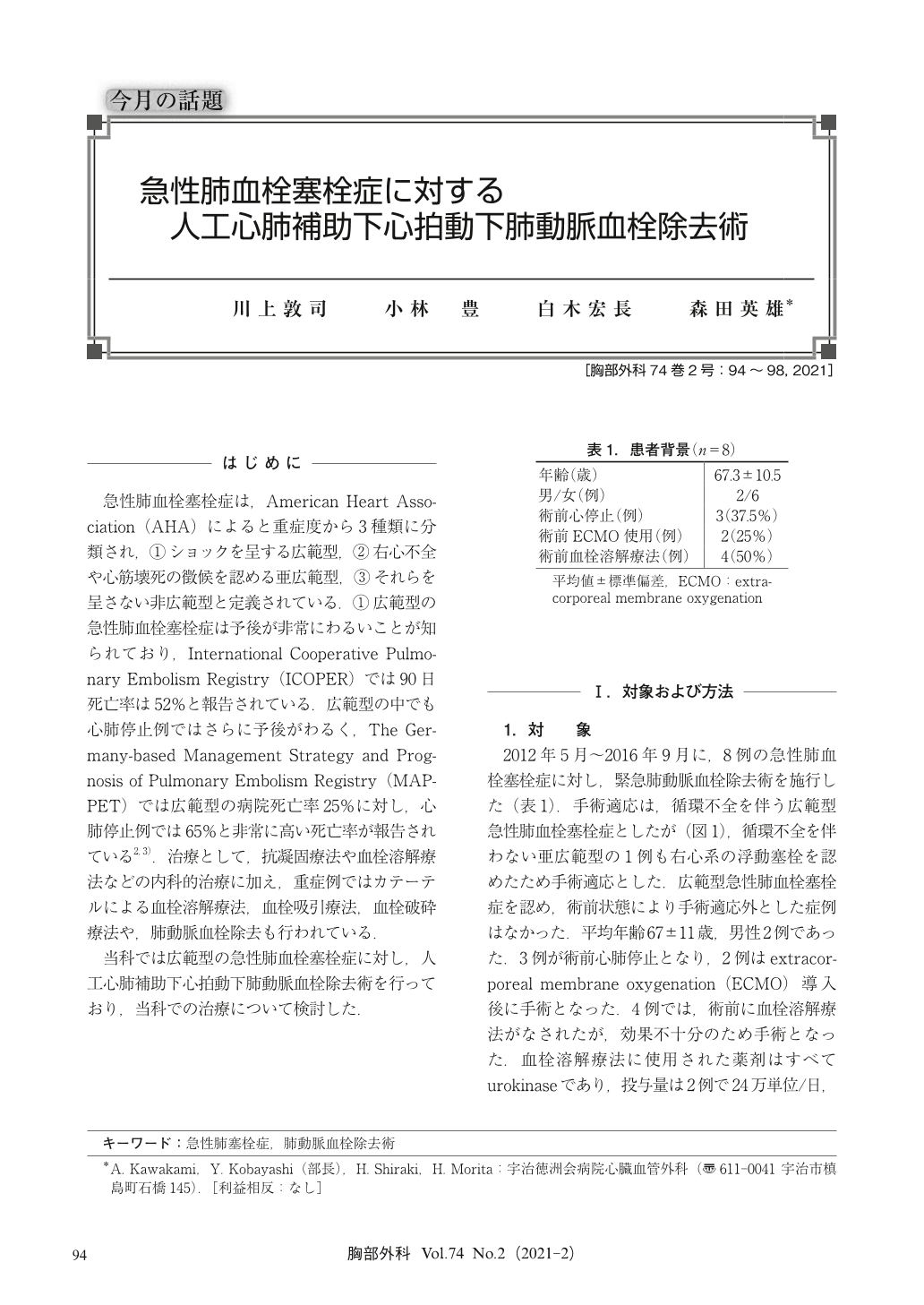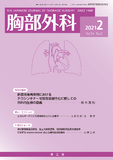Japanese
English
- 有料閲覧
- Abstract 文献概要
- 1ページ目 Look Inside
- 参考文献 Reference
急性肺血栓塞栓症は,American Heart Association(AHA)によると重症度から3種類に分類され,①ショックを呈する広範型,②右心不全や心筋壊死の徴候を認める亜広範型,③それらを呈さない非広範型と定義されている.①広範型の急性肺血栓塞栓症は予後が非常にわるいことが知られており,International Cooperative Pulmonary Embolism Registry(ICOPER)では90日死亡率は52%と報告されている.広範型の中でも心肺停止例ではさらに予後がわるく,The Germany-based Management Strategy and Prognosis of Pulmonary Embolism Registry(MAPPET)では広範型の病院死亡率25%に対し,心肺停止例では65%と非常に高い死亡率が報告されている2,3).治療として,抗凝固療法や血栓溶解療法などの内科的治療に加え,重症例ではカテーテルによる血栓溶解療法,血栓吸引療法,血栓破砕療法や,肺動脈血栓除去も行われている.
Background:Acute massive pulmonary embolism is a life-threatening disease and the reported rate of mortality is 52%.It is often treated with anticoagulation therapy or thrombolysis, but in case of critically ill patients with shock or cardiac arrest, its effect is limited. Surgical embolectomy is a treatment option for patients with hemodynamic instability. We studied the outcomes of our patients who underwent on-pump beating pulmonary embolectomy for acute pulmonary embolism.
Method:We evaluated eight consecutive patients who underwent on-pump beating pulmonary embolectomy for acute pulmonary embolism since May 2012 to September 2016. Our surgical indications were hemodynamic instability, but one patient underwent pulmonary embolectomy without hemodynamic instability because the patient had floating thrombus in the right heart. Three patients experienced cardiac arrest, and two patients were treated with extracorporeal membrane oxygenation (ECMO). Four patients were treated with thrombolysis before surgical embolectomy.
Result:All patients underwent on-pump beating pulmonary embolectomy. One patient could not be weaned from cardiopulmonary bypass, and was treated with ECMO after pulmonary embolectomy. The patient died due to low output syndrome, while the other seven patients were rescued. One patient had gastrointestinal bleeding after surgery, but the other patients had developed no major complication including thrombosis, hemorrhage, and prolonged respiratory failure during follow-up of 11.4±16.1 months.
Conclusion:Pulmonary embolectomy is effective treatment for acute massive pulmonary embolism. On-pump beating pulmonary embolectomy is useful surgical procedure. Acute pulmonary embolism is often treated with anticoagulation therapy or thrombolysis, but in critically ill patients, surgical pulmonary embolectomy should be considered.

© Nankodo Co., Ltd., 2021


